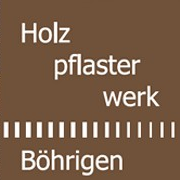
sustainable + ecological

extreme
Durability
Wood-block paving is enormously resistant, durable and is characterised by a long product life cycle. Due to the vertical fibre orientation, compressive forces can be absorbed very well. Even with heavy use, a worn surface can be refreshed by sanding and individual blocks that may need repairing can be replaced without difficulty. In this simplicity and longevity, wood-block paving is unparalleled.
local
Wood species
In production, we mainly use native wood species such as oak, pine, spruce, larch, Douglas fir, ash as well as maple, birch and beech as well as softwoods from Scandinavia. In addition, the use of thermally modified wood from pine, beech, etc. is just as possible as the use of smoked oak.
We only use raw wood from sustainable forestry (FSC or PEFC certified) or carry out the fresh wood cutting ourselves in regional forests.


high
Efficiency
A very high raw material efficiency is achieved in the production of wood-block paving. This is achieved because the dimensions of the blocks are small compared to other flooring (e.g. country house floorboards).
Appropriate sorting during production results in significantly better material utilisation.
outstanding
Ecology
In addition to durability and quality, the ecological safety of products is increasingly becoming the focus of public attention and contributes to conscious purchasing decisions. In response to this trend, the Technical University of Munich has developed life cycle assessments for wooden flooring in accordance with DIN EN ISO 14040 - 14043.
In summary, it is said that "the environmental impact of wood flooring is very low". 1. This is mainly due to the long service life of the respective wooden floor. Wood-block paving is one of the longest used floor coverings. The carbon dioxide (CO2) stored during growth is only partially released during the production of the wooden blocks and remains mainly stored in the wood.
1 Holzforschung München – HFM, Technische Universität München: Ökobilanzierung Holzfußböden; 2. überarbeitete Auflage, August 2002, München


safe
Installation
The picture has also changed with regard to the installation of wood-block paving. In the past, bitumen coatings containing tar were used to bond the material to difficult substrates. Today, PU adhesives and dispersion adhesives are used in the vast majority of cases in accordance with GISCODE D12 for installation materials.
Coating with sustainable and environmentally friendly oils or varnishes is possible without any problems and therefore floors with wood-block paving are particularly suitable for hygienically demanding surfaces in public areas (e.g. schools, museums).
2 GIS – Gefahrstoff-Informations-System; D1 Lösemittelfreie Dispersions-Verlegewerkstoffe
